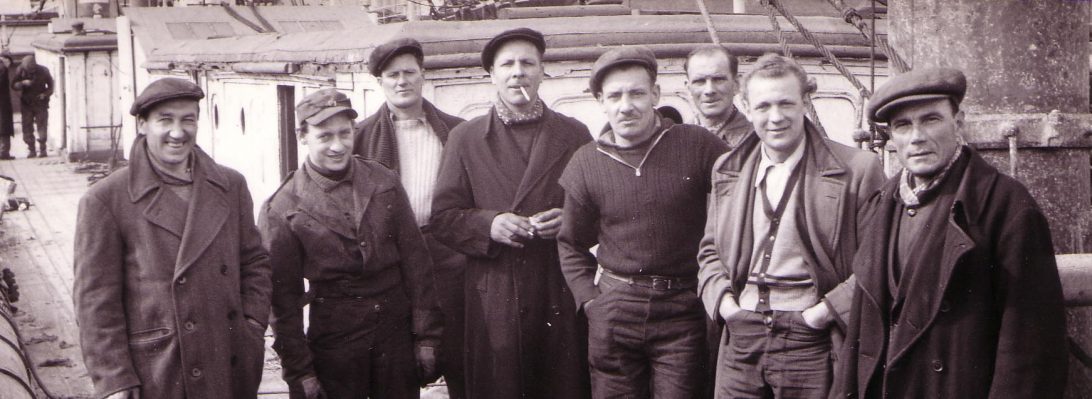In 1949, after service in the RAF, Nicholas Hardinge studied briefly at the London School of Photography, before getting his first job in the darkroom of society photographer Walter Bird. The premises were shared with Photographc Illustration Ltd, who were Industrial and Architectural Photographers.
Later he worked for Pictorial Press Agency, who provided illustrations for the long departed weekly Everybody.
These pictures were all taken in his spare time or weekends. The 2½” x 2″ negatives were lost for over 30 years until they were found on moving house.
These few surviving images illustrate a way of life that has gone for ever. In those days, the Thames and the London Docks were seething with shipping and small craft. The Thames barge, although in decline, was still very much in evidence. The workmen, in their flat caps, all look so different to today.
All these photographs were taken with a Rolleiflex camera. This was not taken at eyelevel, but looking downwards into the dark hood, thus making it easier to snatch pictures undetected, like Gas Workers at Greenwich and the old lady in Deodar Road, Putney.
One of Nicholas’ favourite images is the wreck of the Training Ship Conway. He was being driven by friends from London to Angelsea and, on cross the Menai Bridge, noticed the stranded shape of a man of war. To reach the wreck some distance away involved a difficult descent to the Menai Straits. To this generation, it must seem sacrilege to lose the last fully rigged sailing man of war to see action with the Royal Navy.
Nicholas Hardinge also made many documentary films including “When the Wind Blows” about a Thames Barge delivering sand from Fingringhoe to the Port of London with Alan Herbert commentating. This is now on video.
In 2002 Nick came to supper and said “I want to show you something”. It was some prints from negatives he had lost for over 30 years. Because he had a very small pension he could only afford to have one photograph printed a week. From the few I saw I thought they were wonderful and jokingly said “Can I be your agent?” I sold thirteen of Nick’s photographs to the Museum of London. Nick had a highly successful exhibition at the Riverside Studios in Hammersmith and at the Geedon Gallery. He was thrilled that his long lost photographs were recognised after all this time.
He left me his negatives after his untimely death and I have since had exhibitions of his work at the Russell Gallery and the Fishmongers Hall.
This is a small homage to a great photographer and the wonderful legacy he leaves us all.
Jacqueline Taber
